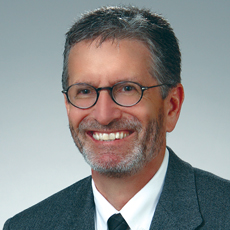
It makes perfect sense for entrepreneurs, opportunists, capitalists, risk-takers and visionaries to enter the aging-services field. While traditional providers play it safe until the economy and consumer demand returns, these disruptive forces are plotting to takeover, salivating over the 78-million strong baby boomer demographic.
New prospects, programs, products and players will sooner than later transform the future of aging services. Some will subliminally infiltrate the system, undetectable to those organizations content with the status quo. Other dynamics will force traditionalists to follow suit or fold up shop.
It will begin with rebranding. Aging services and long-term care will become, simply, longevity. Entrepreneurs will sponsor public education campaigns promoting this new identity: to market to younger, healthier consumers; to recruit an inspired and professional workforce; to advocate to cynical policymakers and zealous regulators; and to relate to media starved for good news.
Get to know what you don’t know
Rather than yielding to these forces, today’s aging-services organizations need to get back in, and ahead of, the game. First and foremost, strategic planning in past tense must be supplanted by genuine vision that attempts to anticipate the landscape decades from now.
Demographic and psychographic research must be critically analyzed, and independent reviews and surveys conducted — to assess internal practices and external realities. Among the many agenda items that should surface and deserve attention, here are 10 to consider:
Paint your organization into the big picture
1. Will a new player like Google change everything? The powerhouse is ramping up Calico, its mysterious healthcare venture to pursue life extension. Such big-picture thinking is the personification of disruptive change. Aging-services leaders must anticipate interest from opportunistic outlier attempting to take advantage of the untapped potential within the longevity industry. Walmart, Walgreens, Costco, Goodwill, General Electric, big pharma, regional health systems, among others have the resources, scale and ability to attract talent necessary to promote healthy longevity (and exploit the individual and societal benefits of the “longevity dividend”).
2. Collaborate with prominent institutions and authorities to independently validate your goals. Establish relations with forward-thinkers in medical research, technology, behavioral sciences, demography and other diverse disciplines.
3. Position your organization with civic leaders who are advancing initiatives for livable communities, i.e. public transportation and age-friendly ride services, caregiver support, encore career training, home retrofitting services, nutrition programs, and social and cultural opportunities.
4. Plan for the inevitable compression of morbidity, a healthier longevity with significantly fewer people needing today’s type and length of long-term care.
5. Invite media attention. Reach out to journalists with news items that have the potential to inform or inspire the public.
At the same time, internalize the new longevity
6. Based on the extensive research and resources associated with dementia and Alzheimer’s, providers must anticipate the conflicting scenarios of the disease escalating or a medical breakthrough. Either inevitability will significantly impact long-term care operations.
7. Value your frontline caregivers, whose service and compassion are the personification of your organization, and the essence of your word-of-mouth marketing.
8. Assert your organization’s expertise and resources in official planning, policies and training for caregiving. Use these opportunities to demonstrate social accountability and establish an affinity with prospective consumers.
9. Encourage gentrification and generativity. Older adult communities should be economic, environmental and social models of generational unity not gaps.
10. Make plans that demonstrate confidence in your organization’s future. Leadership must have the fortitude to balance immediate gratification (high occupancy rates, positive operating margins) with a commitment to a sustainable future. Competitive enterprises expand when others entrench, spend money to make money, increase advertising in tough times, and tell consumers what they need before they know it themselves.
Think of longevity as a prophetic call to action. And recall the words of the Roman rhetorician Seneca, “There will come a time when our descendents will be amazed that we did not know the things that are so plain to them.”
Stuart Greenbaum, president of Greenbaum Public Relations, is the recipient of LeadingAge’s 2011 Public Trust Award, and author of the book Longevity Rules and blog www.humblesky.net.



